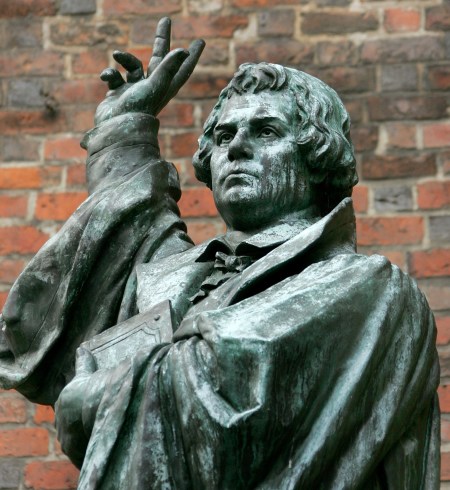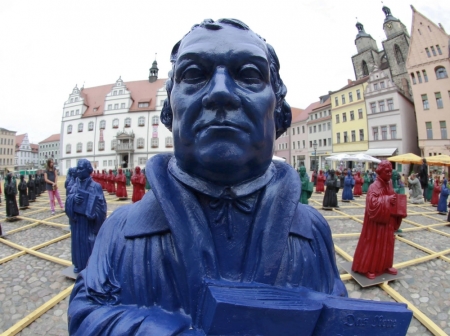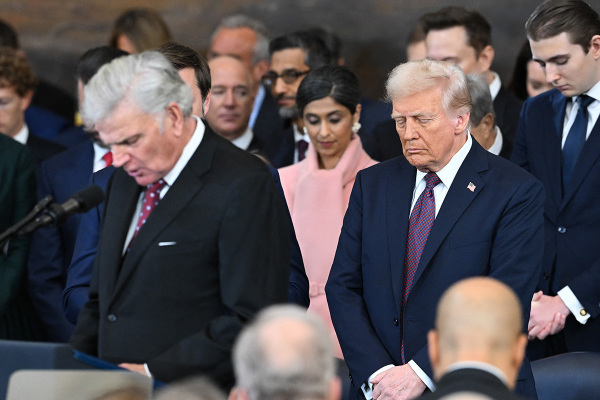5 Interesting Facts About Reformation Day

2017 marks the 500th anniversary of the Protestant Reformation which started when Martin Luther nailed his 95 Theses to the Castle Church door in Wittenberg, Germany, on Oct. 31, 1517.
Many churches celebrate it, especially in the Reformed tradition, on the last Sunday of October or will on Nov. 1.
The Protestant Reformers believed that they were recovering the centrality of Scripture within the Christian tradition. Luther's initial principle dispute with the Roman Catholic Church was primarily related to clerical abuses, especially related to the selling of indulgences. "The Church's true treasure is the Gospel of Jesus Christ," Luther declared.
The Protestant doctrine of justification by faith alone and the priesthood of all believers are two critical beliefs that shaped Protestantism and powerfully changed the trajectory of Western Civilization. Many of the modern ideas of Democracy grew out of the priesthood of all believers, sola scriptura, and Presbyterian form of church government.
Luther "did more than any single man to make modern history the development of revolution," declared the 19th century English historian Lord Acton.
Below are five important facts about Reformation Day:
1. Martin Luther disputed the idea of papal indulgences, but why?
Luther did not initially mean to separate from the Roman Catholic Church but was only asking for reforms on the proper interpretation of Scripture, especially on the idea of repentance. The very first of his listed 95 Theses reads: "When our Lord and Master Jesus Christ said, 'Repent' (Mt 4:17), he willed the entire life of believers to be one of repentance."
Some Roman Catholic leaders were selling indulgences promising that past and future sins would be forgiven. A common refrain from the time attributed to Catholic clergyman Johann Tetzel was "As soon as a coin in the coffer rings, a soul from purgatory springs." Luther, of course, contested the idea that salvation, forgiveness, and repentance could be bought and sold.
2. Luther translated the entire Bible into German.
Luther completed his Greek to German translation of the New Testament in 1522 and with the help of scribes and assistants completed the Old Testament in 1534, completing his German Bible that played a major influence on English translation and the King James Version.
Making sure that Scripture was available for the masses to read was of central importance to the Protestant Reformers. While not the first German translation, Luther's Bible is credited largely for transforming the German language.

3. Reformation Day is a national holiday in Chile.
While much of Europe and North America have becomes more culturally secularized, Protestantism, especially with the growth of Pentecostals, has exploded in Latin America. Chile, a majority Catholic country, like much of the region, has seen a rapid rise in Protestant believers.
4. Four-hundred and ninety-eight years ago on this day, Luther was neither a Protestant nor Lutheran.
When he nailed his 95 Theses to the door of the church, Luther was still Roman Catholic. As referenced earlier, Luther was looking to reform a faith tradition in which he was a clergy member and theological teacher at the University of Wittenberg. Luther posted his theses, which spread throughout Europe rapidly, so there could be debate on the matter.
Luther stated confidently that he thought the whole matter would be cleared up after the Pope Leo X corrected those whom Luther believed had erred. Later, Luther preferred to be called "Evangelical" and did not like the term "Lutheran."
5. Luther's Hymn "A Mighty Fortress" is popularly known as the "battle hymn of the Reformation."
The well-known hymn is often played and sung in many Protestant churches on the Sunday when they have Reformation Day services. The words, penned by Luther, are a loose paraphrase of Psalm 46. The popular hymn was sung at the funeral for former President Dwight D. Eisenhower (1890-1969).





















